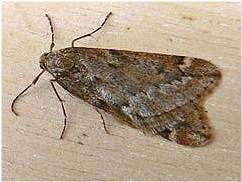A walk on the wild side
Last month, this column (Bulletin 17 February) looked forward to spring after snow had blanketed campus. Thankfully, spring is now very much in the air.
 David Streeter, Life Sciences
David Streeter, Life Sciences
 David Harper, Life Sciences
David Harper, Life Sciences
There is one spot on campus where each year we search for a sure sign that spring has come: the narrow wooded strips that divide the science car park. Sure enough, these are now studded by the deep rich-violet flowers of Sweet Violets Viola odorata.
They are called ‘sweet’ thanks to their powerful scent, which for 2,000 years has ensured their pre-eminent place in European medicine and folklore. Oil of Violets was made from the petals and gave rise to the modern candied violets, while their distinctive perfume, with its sexual connotations, associated the plant with Aphrodite. To be totally unromantic, the scent is a 13-carbon atom sesquiterpene, β-ionone. Human olfactory receptors quickly lose their ability to detect this compound, but rapidly recover: it is this that makes violet perfumes ‘flirty’ as their smell tantalizingly comes and goes.
So far as the violet is concerned, the scent helps to ensure successful pollination by being attractive to early bees. Interestingly, the scent is the same as that of the Middle Eastern Iris reticulata that has a similar colour and flowers at the same time. It is currently flowering in some of the borders around campus.
Mixed with the Violets are the bright-yellow stars of the Lesser Celandine, the early appearance of which we mentioned earlier (Bulletin 20 January).
A careful search also reveals the tiny pale-blue flowers of the Ivy-leaved Speedwell, Veronica hederifolia. Like many plants of hedgerows and cultivated ground, it is not a native but hails from southern Europe. However, its arrival here is lost in the mists of time so it is what the botanists would term an archaeophyte.
 March Moth
March Moth
Mention of the goddess of love brings us to one of the odder insects on campus, the appropriately named March Moth. Like a few other common moths, the females are wingless and hard to identify to species. The male (pictured) is a distinctive beast, resting with overlapped forewings with distinctive white-and-black zigzags, and a fringe of long pale hairs.
At night, the males often come to lit windows, having been distracted from their search for unmated females, which clamber from their pupal cases in the soil to climb a shrub or tree.
Having spotted pairs mating on tree trunks, we rather ungallantly assumed that the relationship was fleeting, with the male deserting long before his mate started to lay eggs on leaf buds. Recently, a vantage point in the Arundel building let us examine the twigs on top of a tall Elder bush. A dull-grey, wingless moth was roaming around the bursting buds being closely shadowed by a male March Moth. So perhaps pairs stay together for at least a while.
